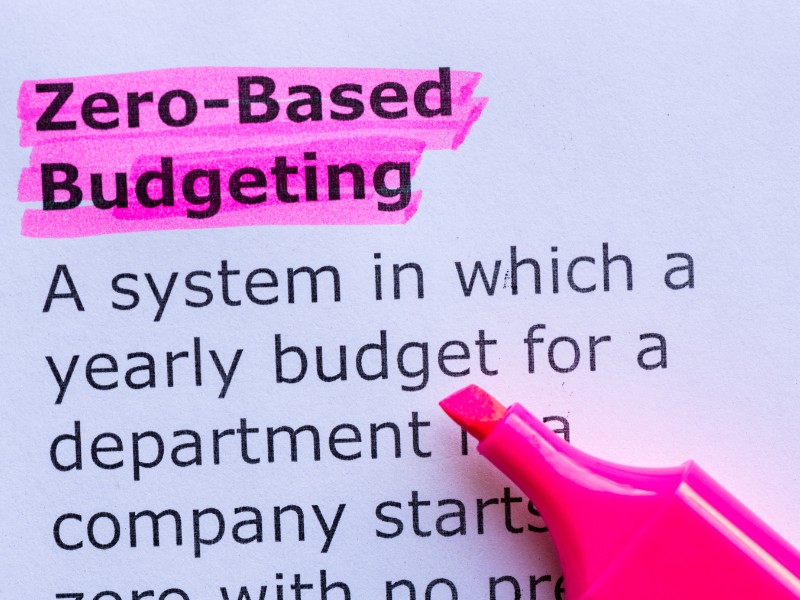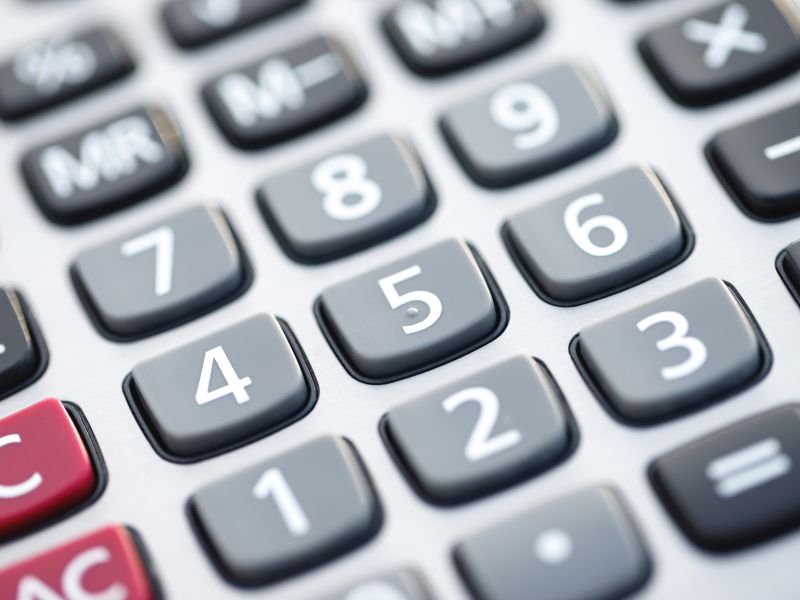Envelope Budgeting: A Hands-on Approach to Managing Finances

This post may contain affiliate links. At no cost to you, we earn a commission from qualifying purchases.
Managing personal finances can be a challenge, and finding a strategy that works for you often involves some trial and error. One popular method that has stood the test of time is envelope budgeting.
It’s a hands-on approach that forces you to be conscious of your spending in various categories by literally setting aside cash in envelopes.
In this article, we’ll explore the how-tos and benefits of this time-tested technique for financial well-being.
The Basics of Envelope Budgeting
Step 1: Identifying Spending Categories
The first step in envelope budgeting is crucial; you must identify the primary categories of your spending. These could range from the essentials, like rent or mortgage, food, and utilities, to discretionary spending such as entertainment, dining out, or shopping.
While you don’t need an envelope for fixed costs like mortgage payments, which are usually the same each month and often paid online or by direct debit, you definitely want envelopes for categories where your spending varies.
Step 2: Creating and Labeling Envelopes
Once the categories are sorted, the next step is to create an envelope for each one. Label each envelope clearly so there’s no confusion when you’re in a rush or when other family members might be using the envelopes.
Some people find it helpful to also jot down the monthly budget amount on the envelope itself, serving as an additional reminder when reaching for cash.
Step 3: Allocating Cash
After your envelopes are set up, you then allocate a predetermined amount of cash to each envelope. This sum should be based on careful planning and a realistic assessment of your income and essential expenditures.
For example, if you’ve budgeted £200 for groceries for the month, place that amount of cash in the envelope labelled “Groceries”. Do the same for the other categories.
Now, you have an allocated budget that you can physically touch, making your budgeting more tangible and easier to follow.
Step 4: The Rules of Spending
Here’s where the discipline part comes in.
Once your envelopes are filled, you have a spending guideline ready to go. The rule is simple but strict: spend only what’s in each envelope for its respective category. If you find that you’ve spent all the money in your “Entertainment” envelope halfway through the month, tough luck — you’ve reached your budget limit for that category.
It’s a strong signal to reconsider your spending habits.
One key rule is to not borrow from other envelopes. While it might be tempting to take money from the “Food” envelope to subsidise a night out, doing so disrupts the integrity of your budgeting effort.
The envelopes serve as distinct financial boundaries, and blurring those lines may lead you down a slippery slope towards poor financial management.
Step 5: Adjust and Refine
After a month or so of using this system, take stock of how it’s working for you.
- Did you set realistic budgets for each category?
- Were you able to stick to the rules, or did you find yourself running out of money in certain envelopes?
Use this reflection period to tweak the amounts, add new categories, or even consider whether envelope budgeting is the right approach for you.
Why It Works
Envelope budgeting is as much a psychological tool as it is a financial one. The act of physically allocating cash to different spending categories makes the budget feel more real. When the money’s gone, it’s gone, providing a concrete barrier to overspending.
In summary, envelope budgeting is a straightforward, hands-on method that offers a strong framework for disciplined spending. It’s a physical act that involves real cash, turning abstract numbers on a screen into something more tangible and immediate. By sticking to the basics and rules of envelope budgeting, you can take significant strides in understanding and managing your personal finances.
Digging Deeper into the Advantages of Envelope Budgeting
The Discipline Factor
Perhaps one of the most compelling aspects of envelope budgeting is the discipline it instills. The physicality of cash being limited to a certain amount for a specific purpose sets a clear, hard boundary for your spending. Every time you reach into an envelope to take out cash, it serves as a mini reality check.
Think of it this way: If you have a card, it’s easy to lose track of your spending. The swipe or tap of a card doesn’t have the same psychological impact as actually seeing your money diminish from an envelope.
Each time you spend, you physically feel your budget for a specific category decreasing. This tangible aspect of the budgeting system can be a powerful deterrent against impulsive purchases or unnecessary splurges. It’s a bit like having a financial guardian angel sitting on your shoulder, reminding you to think before you spend.
The Simplicity Element
Another cornerstone advantage of this system is its utter simplicity.
In a world full of financial jargon, investment portfolios, and complicated tax codes, the straightforwardness of envelope budgeting is a breath of fresh air. You don’t need any fancy tools or software; a simple calculator, paper, pen, and envelopes are all that’s required.
This makes the system universally accessible, breaking down the barriers that might deter someone from taking the first steps towards effective budgeting.
The simplicity also means that it’s quick to set up and easy to understand. There’s no learning curve or period of adjustment. It’s straightforward: money goes in, money comes out, and what’s left dictates your spending ability.
Accessibility and Inclusion
Because of its simplicity, envelope budgeting is incredibly accessible and can be a good starting point for anyone new to budgeting. Whether you’re not tech-savvy, feel overwhelmed by financial planning, or just want something you can touch and feel, this method is incredibly inclusive.
It levels the playing field, making financial management approachable for everyone from students and young adults to older individuals who might be wary of digital budgeting tools.
The Emotional Connection
There’s something to be said for the emotional weight of physically handing over cash as opposed to swiping a piece of plastic. This emotional connection to your money can lead to better financial decisions.
You might think twice about buying that expensive coffee or those shoes you don’t really need when you actually see how much money is left in your “Entertainment” or “Shopping” envelope.
In essence, the advantages of envelope budgeting go beyond the numbers. It’s about creating a psychological framework that encourages responsible spending, while its simplicity makes it accessible for practically anyone willing to give it a try.
Unpacking the Drawbacks of Envelope Budgeting
Security Risks
One of the glaring issues with envelope budgeting is the security risk that comes with carrying around envelopes filled with cash. While it’s true that this tangible interaction with money is one of the method’s strong suits, it’s also a vulnerability. Losing an envelope means losing that cash, and there’s the added worry of theft.
In addition, cash doesn’t offer the same level of transaction tracking and fraud protection that most credit and debit cards do.
Outdated in a Cashless Society
In an era where digital transactions are becoming the norm, the envelope budgeting system can feel like a relic of a bygone age. For frequent online shoppers or those who prefer the convenience of card payments, adhering strictly to a cash-only policy could be a significant hindrance.
It doesn’t integrate seamlessly with online bill payments or digital shopping carts, which can be a deal-breaker for some. In short, it may not be the most practical option for people who live a predominantly cashless life.
Rigidity and Lack of Flexibility
Envelope budgeting is a system that thrives on strict boundaries. While this rigidity can be beneficial for instilling discipline, it can also be a hindrance in situations that require financial flexibility.
Life has a way of throwing curveballs — unexpected medical expenses, car repairs, or other unforeseen costs can arise at any time. When these situations occur, the envelope system doesn’t offer an easy way to adapt without breaking its most fundamental rules, like ‘don’t borrow from other envelopes.’
Complications for Varied Income
For those with variable incomes, such as freelancers or people with multiple income streams, the envelope budgeting system may add an extra layer of complexity. Since the method is based on setting aside a fixed amount of money for each category every month, a fluctuating income makes it challenging to accurately allocate funds to each envelope consistently.
Limited Scope for Financial Growth
One subtle drawback that’s often overlooked is that envelope budgeting focuses more on spending rather than saving or investing.
While it can help you control your spending, it doesn’t inherently encourage you to set money aside for long-term financial growth like investments or retirement funds. Of course, you could create an envelope for savings, but the system at its core is not designed to offer robust financial planning.
Exploring Alternative Approaches to Envelope Budgeting
Digital Envelope Budgeting Apps
If you find the idea of carrying around envelopes full of cash cumbersome or risky, digital envelope budgeting apps might be your go-to solution. These apps mirror the principles of traditional envelope budgeting but do so in a secure, electronic environment.
With such apps, you can allocate your money into different “virtual envelopes,” and the app will track your spending against those budgets. When you use your debit or credit card, the app deducts the amount from the corresponding virtual envelope, helping you maintain the discipline that traditional envelope budgeting instills.
Hybrid Models
For people who are comfortable mixing old and new methods, a hybrid model might work best.
In this approach, you use cash envelopes for certain categories, like groceries and entertainment, where overspending is a concern. For fixed costs like rent or mortgage payments and utilities, which are often paid online or by direct debit, you can stick to electronic payments without the need for an envelope.
This way, you can enjoy the tactile discipline of physical cash for discretionary spending while relishing the convenience and security of digital transactions for fixed expenses.
Zero-Based Budgeting
If you find the envelope method too restrictive but still want a disciplined approach, zero-based budgeting is another option.
In this method, you allocate every pound of your income to specific expenses, savings, or investments, essentially “zeroing out” your budget. While not as physically tangible as envelope budgeting, this method provides similar discipline by making you account for every pound you earn and spend.
The 50/30/20 Rule
Another alternative is the 50/30/20 rule, which allocates 50% of your income to needs, 30% to wants, and 20% to savings and debt repayment.
It’s a broader method that doesn’t go into the nitty-gritty of individual spending categories but offers a balanced financial framework. You can also combine this rule with envelope budgeting for your “wants,” giving you more freedom for spontaneous purchases while keeping you within the guardrails of responsible spending.
Spreadsheets or Budgeting Software
For those who don’t shy away from numbers and prefer a detailed financial overview, spreadsheets or dedicated budgeting software offer a more analytical approach.
You can customise these tools to mirror envelope-like categories, set spending limits, and generate insights into your spending patterns. While this approach lacks the tactile discipline of envelope budgeting, it offers robust tracking and analysis capabilities.
Final Thoughts
The envelope budgeting system might not be for everyone, but its core principle of compartmentalising spending is universally useful. Whether you stick to traditional methods or adopt a digital alternative, this hands-on approach encourages thoughtful spending and financial awareness.
So, give it a try and see if this age-old method can help put you on the road to financial stability.
Featured image by sitthiphong via Canva.com



